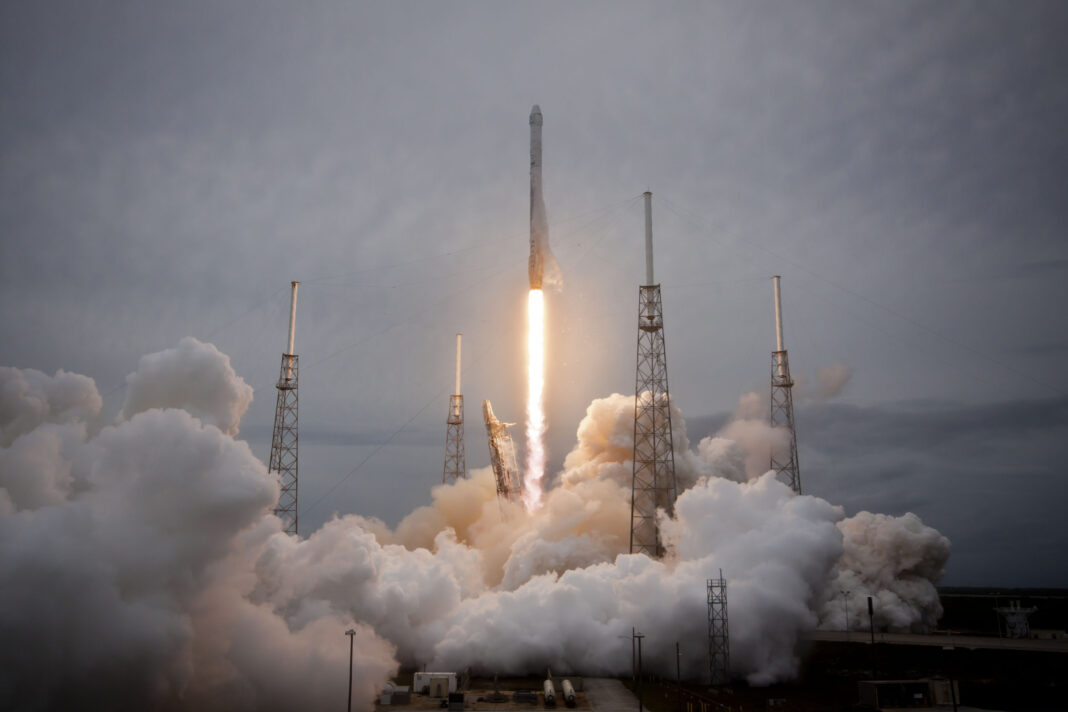A significant development in China’s private aerospace sector was announced after a successful flight recovery test had been conducted by the Beijing-based company, Space Epoch, also known as SEPOCH. This achievement was seen as part of China’s broader strategic ambition to match or eventually rival the spaceflight capabilities of the United States, particularly the reusable rocket technology pioneered by Elon Musk’s SpaceX.
It was stated by the company that the test involved a prototype known as the Yuanxingzhe-1 verification rocket, which had been launched early in the morning from China’s first sea-based space launch centre, located in the waters off Shandong province. The rocket had been propelled skyward at 4:40 a.m., after which it had reached a peak altitude of approximately 2.5 kilometres. According to a video released through the company’s WeChat platform, the engines had been temporarily shut off at the apex of the rocket’s trajectory before being reignited for a controlled vertical descent.
The descent phase, which had ended with a successful landing in the Yellow Sea, was carried out using a method known as Vertical Takeoff and Vertical Landing (VTVL), a technique that has been popularised by SpaceX’s Falcon 9 and Starship programs. The event, which lasted 125 seconds in total, had been hailed by Space Epoch as a critical milestone in its goal of developing liquid-propelled reusable rockets. It was described by the firm as a “major breakthrough” in reusable launch vehicle development, indicating progress toward China’s aspirations in cost-effective and sustainable spaceflight.
Reusable rockets, it was noted by analysts, are regarded as essential to the long-term viability of space infrastructure, tourism, and deep-space exploration. As nations with space-faring ambitions, including China, invest heavily in orbital infrastructure and exploration programs, the ability to reuse rockets has been considered a key factor in reducing costs and increasing launch frequency. For China, replicating the successes achieved by SpaceX would represent not only technological parity but also an enhancement of national prestige and competitive positioning in the evolving global space economy.
The test performed by Space Epoch was understood to be particularly significant because no Chinese company had yet been able to launch and recover an orbital-class rocket with the same degree of reliability as SpaceX. While the Yuanxingzhe-1 rocket had not reached orbit during this test, the recovery manoeuvre was perceived as laying foundational groundwork for future, more ambitious missions. The fact that the launch had been conducted from a sea-based platform also added to the technical complexity of the mission, highlighting China’s increasing experimentation with flexible and mobile launch options.
Observers within the aerospace sector pointed out that this recovery test aligned with a growing global trend in space technology, where private companies, often backed by government partnerships, were pushing boundaries in the reusability of launch vehicles. It was noted that SEPOCH’s progress reflected a broader shift in Chinese space policy, which had increasingly been opening the sector to private enterprise, in hopes of spurring innovation, reducing costs, and fostering commercial competitiveness.
In addition to reducing expenditure, reusable rockets were believed to offer environmental benefits by limiting the need for new materials and production processes for each launch. The VTVL method, in particular, had been seen as advantageous for minimising crash risks and ensuring precision recovery, especially over water-based landing zones.
Despite these advancements, analysts had also stressed that SEPOCH and other Chinese firms still faced a steep road ahead before reaching operational maturity comparable to SpaceX. Regular orbital launches, routine recovery of first-stage boosters, and commercial reliability remained milestones yet to be achieved. Nevertheless, it was widely acknowledged that the demonstration conducted by SEPOCH placed China on a clearer path toward mastering technologies that were once exclusive to the most advanced aerospace nations.
Though a single test flight would not define future success, the momentum generated by this breakthrough was expected to accelerate China’s pursuit of reusable launch systems. If sustained, such efforts could significantly reshape the competitive dynamics of global spaceflight and expand the commercial opportunities available to emerging space nations.
In the coming years, attention would likely shift to how SEPOCH and its domestic peers translate such test achievements into operational reality. With global interest in lunar missions, satellite constellations, and Mars exploration growing steadily, the successful development and deployment of reusable rockets by Chinese firms would be a defining factor in whether the nation could emerge as a dominant player in the next era of space exploration.












